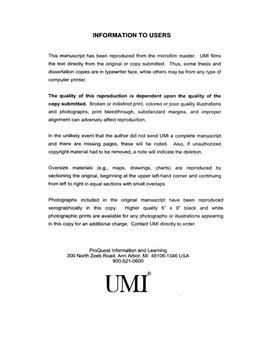| dc.contributor.advisor | Sloan, Stephen, | en_US |
| dc.contributor.author | Rogers, Angela L. | en_US |
| dc.date.accessioned | 2013-08-16T12:18:15Z | |
| dc.date.available | 2013-08-16T12:18:15Z | |
| dc.date.issued | 2001 | en_US |
| dc.identifier.uri | https://hdl.handle.net/11244/314 | |
| dc.description.abstract | During the Cold War era, U.S. foreign policy goals concentrated on containing Soviet expansion. Containment was a simple, yet powerful, idea that provided a strategic vision of world politics in an essentially stable bipolar global security system. The collapse of this stable order has resulted in a security environment operating in a world of transition, turmoil, and uncertainty. New assertions of nationalism and sovereignty have led to humanitarian crises and regional instability. While the U.S. can exercise leadership in coping with the insecurities that this era of transition brings, the U.S. must be selective in choosing which issues to address. Consequently, questions of why, where, when, and how Washington should intervene in the affairs of other countries continue to confound foreign policy decision-makers in the post-Cold War era. Thus, the critical question that directs this research is the following: When regional organizations or the UN decide to pursue multilateral military intervention, when is it in the U.S. national interest to be involved and to what extent? While the U.S. can certainly intervene unilaterally, this study concentrates solely on multilateral military intervention (often referred to as U.S.-led coalitions). | en_US |
| dc.description.abstract | A basic premise of this study is that U.S. decision-makers should avoid multilateral military intervention in world affairs when the risk level outweighs the threat level. When the risk level and threat level are equivalent, an opportunity analysis should determine the intervention decision. If the threat level is greater than the risk level, U.S. multilateral military intervention would be warranted. Clearly, if the threat to U.S. national security is high, the U.S. should do whatever is necessary to protect the country (irrespective of the risk level). | en_US |
| dc.description.abstract | This research is intended to bridge a gap between theory and practice in intervention decision-making. The purpose of this study, therefore, is to provide an intervention decision-making calculus consisting of three components: threat assessment, risk assessment, and opportunity analysis. Threat and risk assessments will be conceptualized at three levels: high, mid, and low. Threat levels will be assigned to the salience of national interests being threatened and the degree of U.S. commitment to protect those interests. A threat-level intensity continuum will be developed to guide decision-makers in placing the crisis at the proper threat level. In addition, a risk-level intensity continuum will be developed to guide decision-makers in placing the crisis at the proper risk level. Risk level representation will be determined by the perceived costs of intervening. An analysis of selected case studies of U.S. military involvement in multilateral intervention in the post-Cold War era will identify critical factors that contribute to high, mid or low level risk. Finally, an opportunity analysis will assess the potential effectiveness of the intervention (the idea that intervention will make a lasting difference) and the impact of moral/humanitarian concerns on intervention decisions (e.g., domestic pressure to intervene). | en_US |
| dc.format.extent | ix, 263 leaves ; | en_US |
| dc.subject | Political Science, General. | en_US |
| dc.subject | International police United States. | en_US |
| dc.subject | Peacekeeping forces United States. | en_US |
| dc.subject | United States Armed forces Foreign countries. | en_US |
| dc.subject | United States Foreign relations. | en_US |
| dc.subject | Intervention (International law) | en_US |
| dc.subject | United States Armed forces Operations other than war. | en_US |
| dc.subject | Political Science, International Law and Relations. | en_US |
| dc.title | Multilateral military intervention analysis in the post-Cold War era. | en_US |
| dc.type | Thesis | en_US |
| dc.thesis.degree | Ph.D. | en_US |
| dc.thesis.degreeDiscipline | Department of Political Science | en_US |
| dc.note | Adviser: Stephen Sloan. | en_US |
| dc.note | Source: Dissertation Abstracts International, Volume: 62-03, Section: A, page: 1202. | en_US |
| ou.identifier | (UMI)AAI3009537 | en_US |
| ou.group | College of Arts and Sciences::Department of Political Science | |
